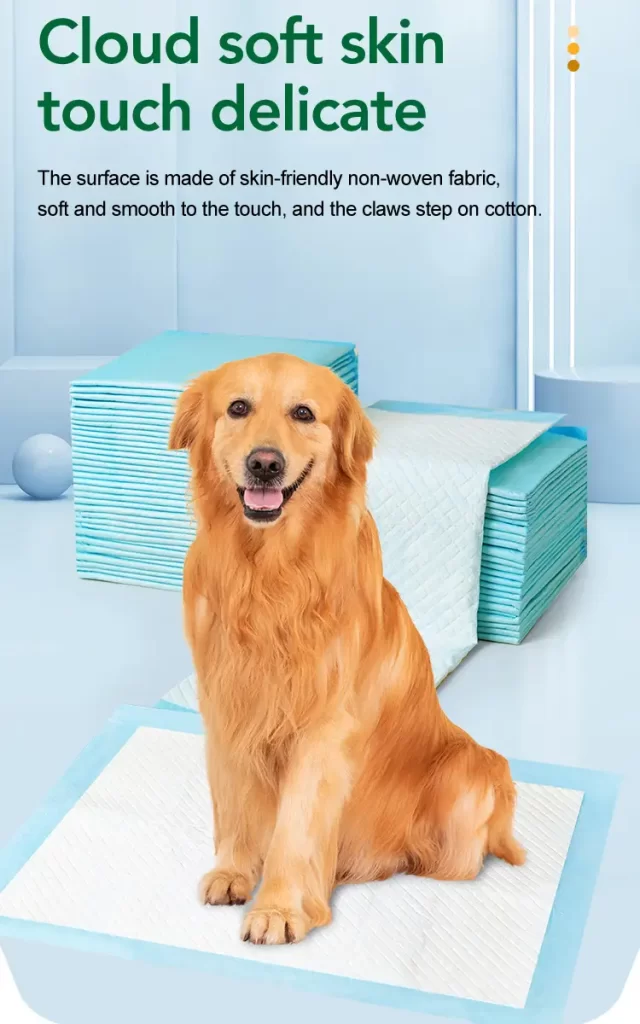Introduction
Keeping your pet’s area clean is essential for their health and comfort. Pet pads, also known as training pads or pee pads, are a fantastic tool to help manage messes and maintain a tidy space. This article will explore the benefits of pet pads, how to select the right ones, and practical tips for keeping your pet’s area clean.
Benefits of Using Pet Pads
- Convenience:
- Easy Cleanup: Pet pads absorb moisture and contain messes, making cleanup straightforward. Dispose of the used pad and replace it with a fresh one.
- Odor Control: Many pet pads come with odor-neutralizing properties, keeping your home smelling fresh.
- Training Aid:
- Housebreaking: Pet pads are excellent for housebreaking puppies, providing a designated spot for indoor relief.
- Consistency: Using pet pads helps reinforce consistent behavior, aiding in quicker training.
- Health and Hygiene:
- Prevent Infections: A clean pet area reduces the risk of bacterial infections and skin irritations from prolonged exposure to urine.
- Dry Environment: Pet pads help maintain a dry area, preventing mold and mildew growth.

Choosing the Right Pet Pads
- Size:
- Select a pad size appropriate for your pet. Larger pads are better for bigger dogs, while smaller pads suit puppies and small breeds.
- Absorbency:
- Opt for high-absorbency pads to handle your pet’s output without leaking. Multi-layered pads with a waterproof bottom are ideal.
- Material:
- Choose durable, non-toxic materials. Quilted top layers can provide extra comfort for your pet.
- Additional Features:
- Some pads have adhesive strips to stay in place, and others have attractant scents to encourage use.
Tips for Keeping Your Pet’s Area Clean with Pet Pads
- Regular Replacement:
- Frequent Changes: Replace the pet pad regularly to maintain cleanliness and prevent odors. Depending on usage, this may be multiple times a day.
- Scheduled Routine: Establish a routine for changing pads, such as every morning and evening.
- Proper Placement:
- Designated Spot: Place the pad in a consistent location where your pet feels comfortable. This reinforces training and helps them know where to go.
- Away from Food and Bed: Keep the pad away from your pet’s food and sleeping areas to avoid contamination.
- Training Your Pet:
- Positive Reinforcement: Use treats and praise to encourage pad use. Consistency and positive reinforcement will help them learn quickly.
- Gradual Transition: If transitioning to outdoor potty training, gradually move the pad closer to the door over time.
- Cleaning Surrounding Areas:
- Regular Cleaning: Clean the floor and surrounding area around the pad regularly to prevent lingering odors or stains.
- Disinfectants: Use pet-safe disinfectants to clean the area and remove bacteria.
- Monitoring Usage:
- Check for Signs: Monitor the pad for wear or excessive use. If it becomes saturated quickly, consider a more absorbent option.
- Adjusting Size: Adjust the size and type of pad as your pet grows or their needs change.
Conclusion
Pet pads are a convenient and effective solution for maintaining a clean and hygienic pet area. By selecting the right pads and following these practical tips, you can ensure that your pet’s space remains tidy and pleasant. A clean pet area contributes to your pet’s health and happiness, making pet ownership a more enjoyable experience for both you and your furry friend.
